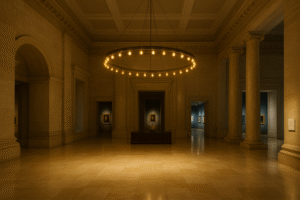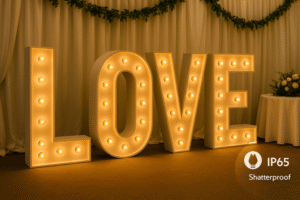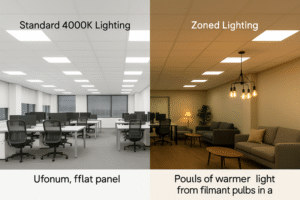Are you selling flame bulbs that look more like a cheap, blinking toy than a real candle? Unrealistic flicker, an unnatural orange color, and a fake-looking "flame" can make your product a customer disappointment.
A realistic flame effect depends on three things: advanced animation from a dedicated IC chip, a natural color temperature around 1800K, and a well-diffused bulb shape that softens the light. Look for bulbs that avoid simple, repetitive blinking in favor of a more random, organic flicker.
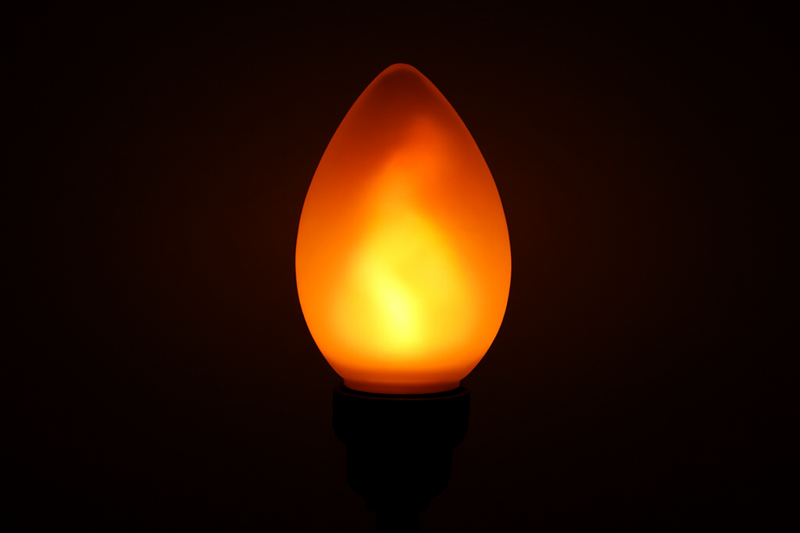
The market for flame-effect bulbs is a perfect example of a product category where quality makes all the difference. Anyone can make an orange LED blink, but creating a truly convincing fire effect is an art that requires good engineering. I've seen so many examples of this gone wrong. I once had a prospective client send me a sample of a flame bulb he was sourcing from another factory. When we turned it on in our lab, everyone laughed. It was just a series of orange LEDs blinking in a simple, on-off-on-off pattern. It looked like a warning light on a piece of machinery, not a candle flame. He was having trouble selling them, and it was obvious why. A successful decorative product like this doesn't just provide light; it provides an experience. If the experience feels cheap and fake, the product will fail.
What is the technology behind a realistic LED flame effect?
Are you wondering why some flame bulbs look amazing while others look terrible? The secret is hidden in the electronics, and choosing a bulb with cheap internals is a recipe for an unsellable product.
The most realistic effects are not just random blinking. They use a dedicated Integrated Circuit (IC) chip that runs a sophisticated algorithm, controlling multiple LED segments to simulate the fluid, random movement of a real flame. Cheaper bulbs just use a simple circuit to blink all the LEDs at once.
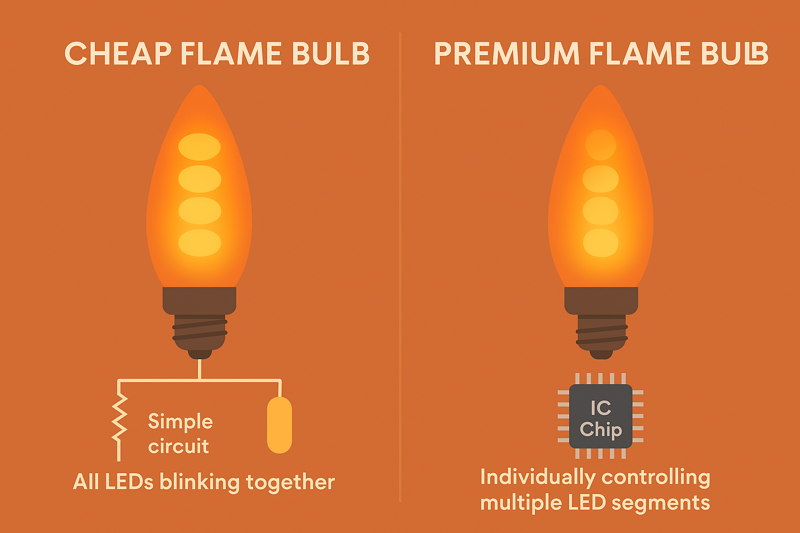
The difference between a good and a bad flame bulb is almost entirely in the "brain" of the product. When this product category first emerged, the technology was very basic. Now, it has evolved significantly. As a manufacturer, we have to make a choice: do we use the cheapest possible components to hit a low price point, or do we invest in the more advanced technology that creates a truly beautiful effect? For clients in the US, UK, and Netherlands who are building a brand based on quality, the choice is clear. They understand that their customers will pay a little more for a product that delivers a magical ambiance rather than a cheap-looking gimmick. The magic comes directly from the quality of the internal driver and the software it's running.
The Evolution of Flame Bulb Technology
Let's look at the different levels of technology you'll find in the market.
- Level 1 (The Blinker): This is the cheapest and worst version. It uses a very simple circuit that essentially just turns a string of orange LEDs on and off. There's no variation, no randomness, and no simulation of movement. It's a blinking light, not a flame. These are the bulbs that give the category a bad name.
- Level 2 (The Fader): A slight improvement, this type uses a circuit that fades the LEDs up and down. This is better than simple blinking, but the pattern is often very repetitive and still doesn't look like a real flame's dynamic movement.
- Level 3 (The Algorithm): This is where true realism begins. High-quality bulbs use a dedicated IC chip1 programmed with a complex algorithm. The LEDs2 are arranged in multiple, separately controlled segments. The algorithm then orchestrates these segments, making them brighten, dim, and flicker independently and in a pseudo-random pattern. This mimics the way different parts of a real flame move and dance. The best algorithms also simulate the upward "flow" of a flame.
Gravity Sensor: The "Wow" Factor
The most advanced flame bulbs include a gravity sensor, or accelerometer.
- What it does: This sensor detects the orientation of the bulb. If you install the bulb upside down in a hanging fixture, the sensor tells the IC chip to reverse the direction of the flame animation, so it always appears to be burning upwards.
- Why it Matters: This is a crucial feature for versatility. A customer who buys a bulb for a wall sconce (base down) might also want to use it in a hanging pendant light (base up). Without a gravity sensor3, the flame would look completely unnatural in one of those positions. This is a premium feature that demonstrates a real commitment to quality and user experience.
Here's how the technologies stack up:
| Technology Level | Description | Flame Effect | Orientation Aware? |
|---|---|---|---|
| Basic Blinker | Simple on/off circuit | Unrealistic, repetitive blinking | No |
| Simple Fader | Fades LEDs up and down | Slightly better, but still repetitive | No |
| Advanced Algorithm | IC chip controls multiple segments | Realistic, random, fluid movement | Usually No |
| Algorithm + Gravity Sensor | Advanced IC chip plus an accelerometer | Realistic, random, and always burns "up" | Yes |
When you source flame bulbs, asking your supplier specifically about the driver IC and whether it includes a gravity sensor will immediately tell you what level of quality you are dealing with.
How do color and diffusion create a believable flame?
Is the color of your flame bulb a harsh, unnatural orange? The wrong color temperature and poor light diffusion are instant giveaways that the flame is fake, ruining the entire effect.
For a believable flame, the color temperature must be very warm, typically between 1300K and 1800K, to mimic the deep amber glow of a real candle. This light must then be softened by a frosted or milky diffuser to eliminate visible hot spots and create a unified, gentle glow.
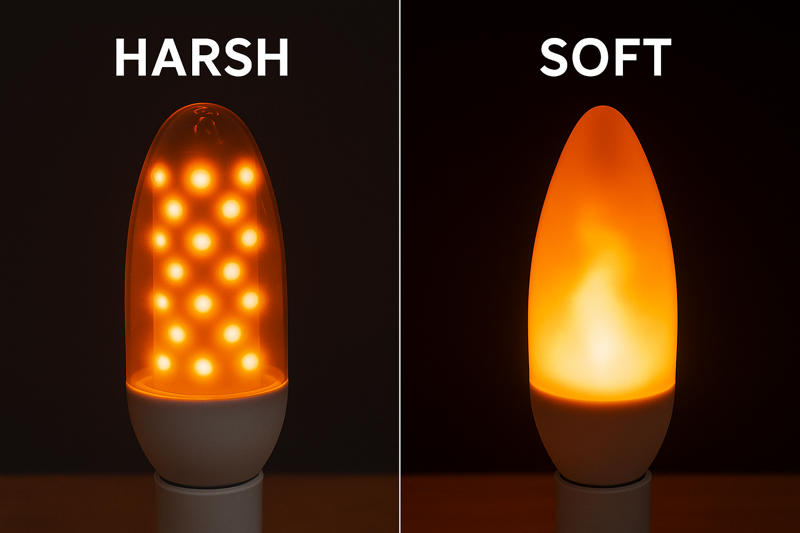
Once you have the right electronic "brain" creating the motion, the next step is ensuring the light itself looks right. A real candle flame isn't a single, uniform color. It has a blue base, a deep orange and yellow body, and a reddish tip. While an LED bulb can't perfectly replicate this, it can get very close by targeting the most dominant and pleasing color: that warm, amber-yellow glow. I once had a client who was adamant about a very specific Pantone shade of orange for his flame bulbs. We had to explain that a realistic fire effect isn't about a single, flat color. It's about achieving a color temperature that feels natural. We sent him samples at 1300K, 1600K, and 1900K. He immediately saw the difference and chose the 1600K as the most authentic. This detail, combined with how the light is shaped, is what sells the illusion.
Perfecting the Color Temperature (CCT)
This is the most critical aesthetic choice.
- The Sweet Spot (1300K - 1800K): This is the Kelvin range that most closely matches the light produced by a kerosene lamp or a candle. It's a very deep, rich amber that is warm and inviting without being a harsh, cartoonish orange. Standard "warm white" is 2700K, which is far too white and bright for a convincing flame effect.
- Avoiding the "Safety Orange4": Many low-quality bulbs use cheap, off-the-shelf orange LEDs that are closer to 2000K or have a poor color spectrum. This results in a light that looks like a traffic cone or a Halloween decoration, completely shattering the illusion of a sophisticated, decorative flame.
The Importance of the Diffuser
The bulb's envelope is not just a protective cover; it's an essential optical component.
- The Problem with Clear Glass: If you put the flame-effect LEDs inside a clear glass bulb, the customer will see the individual, sharp points of light (the LED chips). This is called "pixelation," and it instantly breaks the illusion. You see the machinery, not the magic.
- The Solution: Frosted or Milky Diffusion5: A high-quality flame bulb will use a frosted (etched) or milky white (opal) bulb envelope. This plastic or glass material acts as a diffuser. It scatters the light from the individual LEDs, blurring them together. This eliminates the harsh hot spots and blends the light into a single, cohesive, and soft shape that looks much more like a real, solid flame. The amount of diffusion is a careful balance: too little, and you see the dots; too much, and you lose the detail of the flickering motion.
Here is how these two elements work together:
| Feature | Low-Quality Implementation | High-Quality Implementation |
|---|---|---|
| Color Temperature6 | 2000K+ or a harsh, flat orange | 1300K - 1800K for a deep, natural amber |
| Bulb Material | Clear glass or plastic | Frosted or milky white diffuser |
| Visual Result | Visible, blinking orange dots | A single, soft, unified glowing flame |
To choose a winning product, you need to find a bulb that combines an advanced algorithm with both the right color temperature and the right level of diffusion.
Do flame bulbs have different modes and features?
Are you offering a simple, one-trick product in a market that expects more? Customers today want versatility and control, and a flame bulb with multiple modes is a much more attractive and useful product.
Yes, better flame bulbs are multi-functional. The best models typically offer three modes, switchable by quickly turning the power off and on: a dynamic "Flame" mode, a "Steady On" mode for constant light, and a gentle "Breathing" or "Fading" mode.
![]()
Adding multiple operating modes is a relatively simple way for a manufacturer to add significant value to a flame bulb. It transforms the product from a single-purpose novelty item into a versatile lighting tool. A customer might love the flame effect for a relaxing evening on the patio, but they might need a standard, steady light from the same fixture when they are reading or have guests over. A bulb that can do both is a much easier sell. From a technical standpoint, adding these modes is just a matter of programming the driver's IC chip. The cost to implement this is minimal, but the increase in perceived value is enormous. For our B2B clients, we always recommend offering a multi-mode bulb because it addresses more customer needs and justifies a higher retail price.
The Three Essential Modes
A well-designed flame bulb should offer these options.
- 1. Flickering Flame Mode: This is the primary mode and main selling point. It uses the advanced algorithm to simulate a dynamic, dancing flame. This is the mode for creating ambiance, mood, and a "wow" factor.
- 2. Steady On Mode: In this mode, the bulb functions like a regular candelabra bulb. All the LEDs turn on to a steady, constant brightness. The color temperature will still be very warm (e.g., 1800K), so it provides a warm, stable light source. This is the "functional" mode, useful for when you need simple, reliable illumination.
- 3. Breathing/Fading Mode: This mode is a gentle alternative to the active flame. The light slowly and smoothly fades up and down over a period of several seconds. It's a very calm and relaxing effect, perfect for nightlights, meditation spaces, or creating a subtle, pulsing glow.
How Does the Mode Switching Work?
The control mechanism is simple and requires no special wiring.
- The Power Cycle Switch: The IC chip is programmed to interpret quick power cycles. The user switches between modes by simply flipping the light switch off and then on again within a couple of seconds. The bulb's internal memory will cycle to the next mode in the sequence (e.g., Flame -> Steady -> Breathing -> Flame...). The bulb will remember the last mode used when it is turned off for an extended period.
This table summarizes the value of each mode:
| Mode Name | Description | Customer Use Case |
|---|---|---|
| Flickering Flame | Dynamic, random, upward-moving flicker | Creating a "wow" effect, mood lighting, outdoor lanterns |
| Steady On | Constant, stable illumination | General lighting, reading, when functional light is needed |
| Breathing / Fading | Slow, gentle pulsing of light | Relaxing, nightlights, creating a subtle ambiance |
Offering these three modes in one product vastly increases its appeal and makes it a much more compelling choice for the end consumer.
Where are the best applications for flame-effect bulbs?
Are you marketing your flame bulbs to the right audience? Placing this highly decorative product in the wrong context can lead to slow sales because customers don't understand how or where to use it.
Flame-effect bulbs excel in decorative fixtures where ambiance is more important than functional brightness. They are perfect for outdoor lanterns, entryway sconces, chandeliers in themed rooms, and anywhere you would traditionally use a gas lamp or a candle.
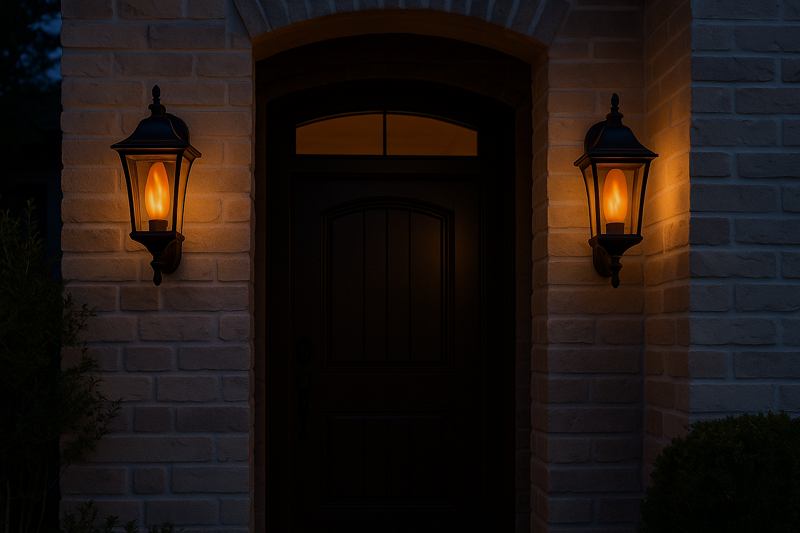
This is a product that sells a feeling, not a technical specification. Therefore, your marketing and sales efforts must focus on showing the product in its ideal emotional context. A product manager like Jacky in America needs to help his customers envision how this bulb will transform their space. Listing the Kelvin temperature and the lumen output (which is typically very low for these bulbs) is not the way to sell it. You sell it with beautiful lifestyle photos and by suggesting specific, evocative applications. We work with our clients to identify the best use cases for their target market, whether it's for creating a spooky atmosphere for Halloween, a rustic feel for a lodge-style restaurant, or a warm welcome in a home's porch lights. The key is to sell the result, not the bulb.
Top Applications for Flame Bulbs
Here are the most popular and effective places to use these bulbs.
- Outdoor Porch Lights and Lanterns7: This is the number one application. Placed inside a traditional-style wall lantern by a front door or on a patio, the bulb creates a gorgeous, safe, and energy-efficient alternative to a gas lamp. The warm, flickering glow is incredibly welcoming.
- Indoor Sconces and Chandeliers8: In fixtures where the bulbs are visible, a flame effect can be a stunning design element. They work especially well in rustic, industrial, or medieval-style fixtures. Imagine a large, wrought-iron chandelier in a dining room filled with these flickering "candles."
- Post Lamps: For lining a driveway or walkway, post lamps fitted with flame bulbs can create a dramatic and beautiful effect that enhances curb appeal and creates a unique sense of arrival.
- Themed Environments: These bulbs are a must-have for commercial spaces with a specific theme.
- Restaurants and bars wanting a cozy, speakeasy, or rustic lodge vibe.
- Themed entertainment venues like amusement parks, escape rooms, or haunted houses.
- Spas and wellness centers looking to create a relaxing, candle-lit atmosphere without the fire hazard.
Marketing and Sales Tips
To sell a decorative product, you must showcase its beauty.
- Use Video: A short video is by far the best way to show off the dynamic flickering effect. A static photo cannot do it justice.
- Focus on Mood: Use descriptive words in your product listings: "Enchanting," "Mystical," "Cozy," "Welcoming," "Dramatic."
- Showcase in Context: Don't just show a picture of the bulb. Show it installed in a beautiful fixture, in a beautifully decorated space, preferably at dusk or at night when the effect is most dramatic.
By clearly communicating these ideal applications, you help your customers understand the product's value and inspire them to buy.
Conclusion
A successful flame-effect bulb combines advanced electronics for a random flicker, a warm 1800K color, and a frosted diffuser for a soft glow. Offering multiple modes and showing it in ideal applications will always outsell a cheap, unconvincing blinker.
Understand how IC chips control flame bulb features for enhanced realism and performance. ↩
Discover the advantages of LED technology in flame bulbs for energy efficiency and longevity. ↩
Explore how gravity sensors enhance flame bulb technology for realistic effects and user experience. ↩
Learn why avoiding Safety Orange can elevate your lighting design and maintain sophistication. ↩
Explore how diffusion techniques enhance light quality and create a more realistic flame effect. ↩
Understanding Color Temperature is crucial for achieving the desired ambiance in any space. ↩
Explore this link to discover how outdoor porch lights enhance safety and ambiance, making your entrance more inviting. ↩
Learn how flame bulbs can transform your indoor lighting, adding a stunning design element to your home decor. ↩





